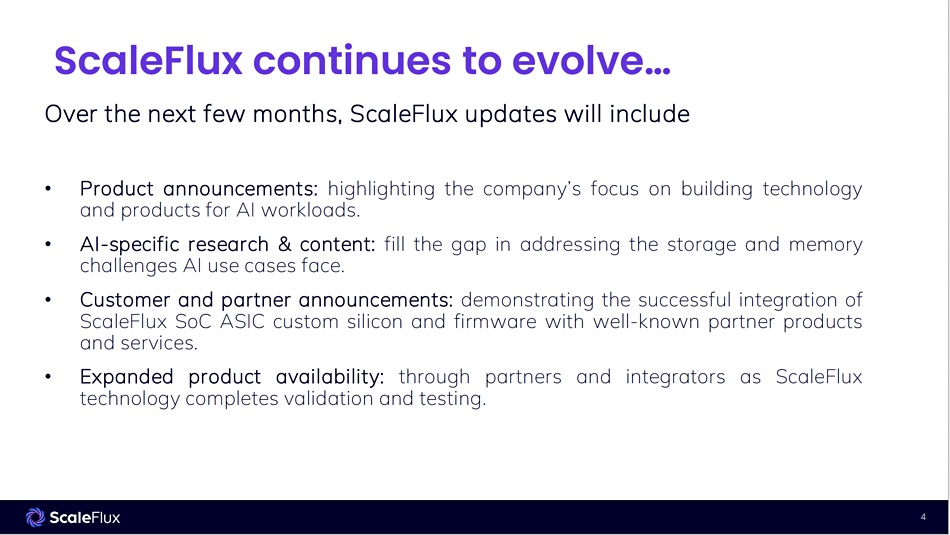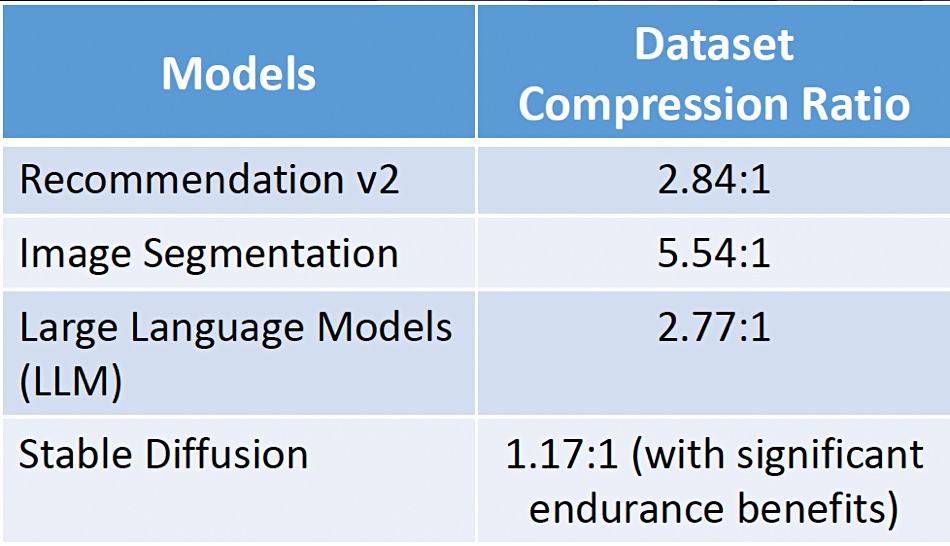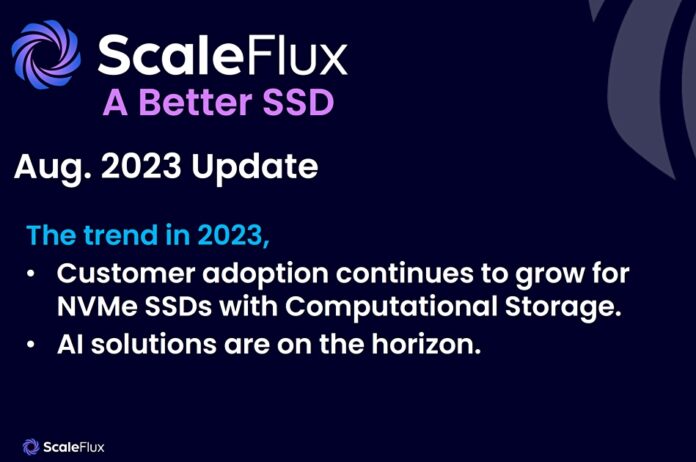ScaleFlux is upping its computational storage drive’s capacity from 12TB to a logical 24TB.
The company provides CSD 3000 drives featuring an SFX 3000 ASIC, a system-on-chip with twin quad-core ARM processors, hardware compute engine, and a PCIe gen 4 interface. It provides transparent compression/decompression, increases the drive’s logical capacity, and also its endurance by reducing the drive’s write storage burden. We have seen a presentation deck it will use at FMS 2023 where it is exhibiting this week in Santa Clara.

The company is increasing the CSD 3000’s maximum raw capacity by a third to 16TB. The SoC’s so-called capacity multiplier function extends this by up to 24 TB by expanding its logical NVMe namespace. E1.S form factor support is coming soon but is not available yet.
ScaleFlux has a PCE gen 5 interface product in development, which should arrive in 2024. The company says it is continuing to integrate its ASIC and firmware with partner products and services. There is a new focus on AI workload support, with ScaleFlux saying its compression provides more data for AI training. It cites MLCommons to assert that AI training sets are significantly compressible. It can optimize checkpoint data during training and improve handoffs between GPUs.

It says it’s working on improving queuing and Flash Translation Layer functions and has announced system integrator partnerships coming to sit alongside an existing Nvidia GPUDirect relationship. There will also be support for new drive form factors and even higher capacity points. The ASIC is going to be developed as well, with joint-development and collaboration partners.
Comment
ScaleFlux raw capacities appear to be behind those of off-the-self SSDs. Although it is promising to increase raw capacity to 16TB and logical capacity to 24TB, customers can buy larger, 30TB, SSDs now, and even 61.44TB SSDs from Solidigm.
The company says it can boost a 16TB raw capacity to 24TB in the near future and so speed AI training workloads, while Solidigm says it provides 61.44TB . Pure Storage provides 24 or 48TB DFM drives today and has a route to 300TB by 2026. IBM has a 38.4TB FLashCore Module with on-board compression and other functions boosting it to 116TB effective capacity.
ScaleFlux has to deliver more than the benefits of a compressed small standard SSD, and its partnerships with database, silicon and other software vendors are probably key to that. Compression on its own might not be enough.
But this is a capability that will have to be enhanced with every raw capacity increase coming from the NAND suppliers, as they increase 3D NAND layer counts.
The company’s integration and partnerships with a vertical market and edge computing focus look to be vital in sustaining its growth.
We have asked ScaleFlux about these points and will update things when we hear back.








